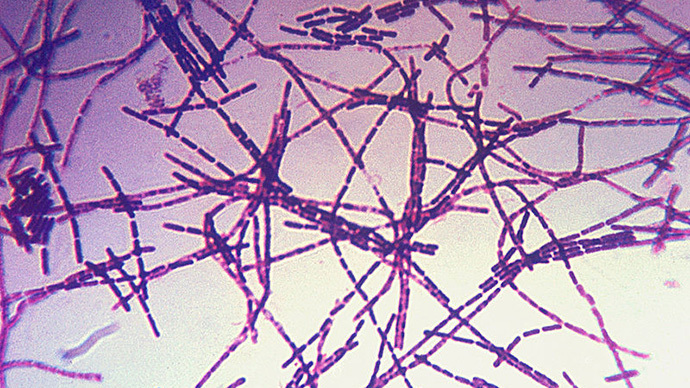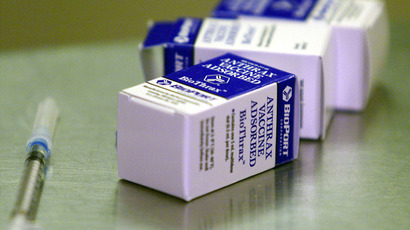Dozens of US government employees potentially exposed to live anthrax

As many as 84 scientists working at the Centers for Disease Control and Prevention (CDC) in Atlanta may have been exposed to the anthrax bacteria after failing to follow safety procedures, the US government said.
According to information released by the CDC earlier on Thursday and first reported by Reuters, the possible exposure to live anthrax began within a high-level bio-security lab. Researchers evidently failed to follow set procedure to inactivate the deadly bacteria.
Potentially live anthrax samples where then transferred to CDC labs with a lower biohazard protocol, leaving open the possibility for infection. Typically, inactivation procedures dictate the inactivation of Anthrax to be given 48 hours prior to any transfer to a lower biohaz environment.
Still, the CDC says that the potential for anthrax infection to spread widely over the incident is low.
"CDC believes that other CDC staff, family members, and the general public are not at risk of exposure and do not need to take any protective action."
The FBI is now collaborating with the CDC to investigate how scientists were exposed to anthrax, although they say there is no evidence of wrongdoing.
There would be several ways in which lab workers could have been exposed to live anthrax bacterial infection, including cutaneous (via the skin), inhalation, and through ingestion -- the latter obviously being the most unlikely in a laboratory setting.
Anthrax infection tends to initially manifest itself as a case of the common flu.
"In the worst-case scenarios, literally, within a day or two of exposure, if you've inhaled spores and if they are very lethal, one begins to get -- as they say -- the standard flu symptoms -- high fever, malaise," said Leonard Cole, a bioterrorism expert quoted by CNN. "You get lazy. You feel sick. You get headaches. You get bone aches.”
"And then after a day or two, in the worst case, if you don't get treatment, it could be lethal for you, and beyond treatment.”
The CDC said that the potential anthrax exposure was discovered on June 13, and may have occurred between then and June 6.
Anthrax, which first came on the scene as a biological weapon during World War I trench warfare, is rated by the CDC as a Category A agent, or one that poses the greatest possible threat on public health, as well as an agent that could spread across a large area.
As a modern biological threat, anthrax made national headlines in the fall of 2001 shortly after the September 11th terrorist attacks, during an episode dubbed “Amerithrax” when five people and 17 were infected during anthrax spore attacks conducted via anonymous letters sent to news outlets in New York, Florida, and a congressional office building Washington, DC.
Since that episode, both the US postal service and government and private mail rooms have enacted greater safety measures to guard against instances of mailed anthrax spores.














